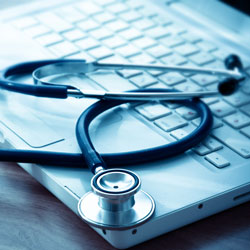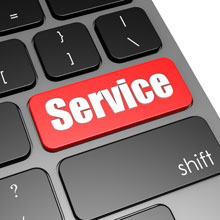 |
If a security or video surveillance / CCTV system isn’t working, who’s to blame? Or more to the point, what’s to blame? Is the problem the malfunction of a specific device on the edge of the IP network, or is it a network or other system failure? How can an end user or dealer / installer know what the problem is? How can a camera manufacturer know if a call to their overworked tech support department is really about the manufacturer’s camera or caused by some other system issue? Peter McKee, co-founder of CRAS Systems, says that the industry’s accelerating transition to IP networking makes answering these questions more complicated and more critical than ever. This article will look at how cloud-based proactive health and performance monitoring can answer these questions.
Network diagnostic tools are familiar in the IT community, but they do not address the specialised needs of keeping a physical security system in operation. A health and performance monitoring system geared specifically to the physical security marketplace can benefit end users, dealer / integrators and manufacturers alike. Beyond just monitoring the network, software can now monitor each IP device on the network, each camera, switch or storage device at the sensor level.
Furthermore, health and performance monitoring systems can provide manufacturers accurate and reliable data on the performance of their products, including real metrics and feedback about equipment operating in the field and directing immediate attention to any common problems to be addressed. Working with manufacturers, performance monitoring software can be preconfigured to monitor a specific supplier’s products, including multiple variables and functionalities.
Monitoring IP edge devices
There is a large and rapidly growing “crossover” element in today’s physical security market. Security dealers whose success has historically been anchored in analogue technologies are becoming more active in the high-tech and complicated world of computer and network-based technologies that drive new IP systems. Meanwhile, many in the IT community are “crossing over” into the realm of IP surveillance and CCTV systems as a way to expand their businesses.
More integrators are under pressure to install ever-more-complicated systems demanded by customers despite an excessive amount of time required to maintain and support these systems. Troubleshooting problems of IP systems can be a huge challenge.
 |
| There is more trust in a system that incorporates a comprehensive health check as a standard feature |
A software program, installed at the server level and communicating with secure offsite servers, can monitor operation of the network and also the actual physical devices themselves. Problems are not always as simple as knowing whether a device / camera is on or off. A camera might be partially working or appear to be working because there is an image. However, the camera may not be functioning fully; for example, it may not be recording to the storage device at the specified times or based on a preconfigured event. For security systems, partial functionality is not good enough.
Without real-time health monitoring, such failures of a system component may be discovered only after a requested image, alarm or video sequence proves to be missing or not recorded. A frustrated and disappointed end user may complain to a disillusioned installer whose otherwise sound relationship with a customer has been undermined. New business and referrals could be at risk.
When a system fails to record an alarm situation or incident, it has historically been difficult to ascertain quickly and effectively which component of the system has malfunctioned. The classic situation is that the camera manufacturer gets the support call; if there is no image, the easy assumption is that the camera is at fault. However, the real fault might lie in the switch or in other software on the system, or a combination of factors. The complexity makes it time-consuming for support technicians, whether from a manufacturer or an integrator, to arrive at a solution. Sometimes finger-pointing can ensue. Device health monitoring at a sensor level solves such problems.
Another opportunity of health and performance monitoring systems is the ability to offer proactive as well as reactive support. This means giving customers/end users access to the tools to facilitate self-help in lieu of support calls. Customer expectations and communication preferences are changing. Many customers prefer to access a knowledge base to use as a reference and forum without having to go through tech support. Many customers are asking for a proactive outbound notification approach and interactive proactive communication. Preventing a situation keeps it from becoming a problem.
Simplifying technical support challenges
A health and performance monitoring system can radically improve the efficiency of IP security systems for end users and dealer / integrators, while also drastically decreasing the time manufacturers and suppliers spend on support calls.
With the help of health monitoring systems, even integrators with less technical know-how can compete in the new high-tech environment. There are fewer unknowns and variables, and there is more trust in a system that incorporates a comprehensive health check as a standard feature.
With the help of health monitoring systems, even integrators with less technical know-how can compete in the new high-tech environment |
Technical resources are freed up to focus on project sales and management rather than technical support. There’s no need to talk an end user customer through a variety of possible fixes, for example, because the integrator has a window into how each component in the system is functioning in real-time. The support function is simplified to the point that first-line support techs can identify any problem quickly and efficiently.
For manufacturers, there are new capabilities for technical support. Costs of telephone-based tech support include thousands of hours of consulting time, conferences and operations research to maximise service at reasonable cost. Manufacturers are striving to achieve a better tech support cost ratio, and performance monitoring provides a useful new tool.
Making the complex more transparent
The critical importance of physical security to the enterprise requires rapid response to system downtime, whatever the cause. Dealer / installers build their business on satisfied customers, so they need a tool to facilitate their responsiveness. Manufacturers need to streamline support processes and tell at a glance if their products are at fault. Secure offsite server-based proactive health and performance monitoring can meet these needs and make performance of today’s complex IP systems more transparent than ever.




















